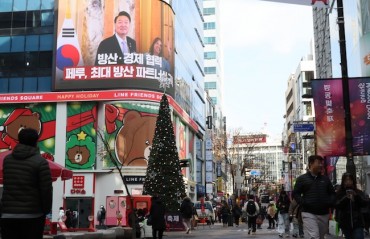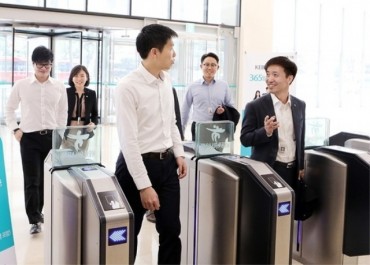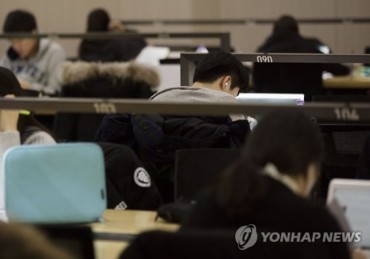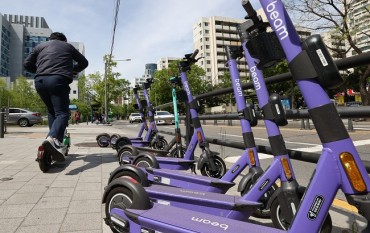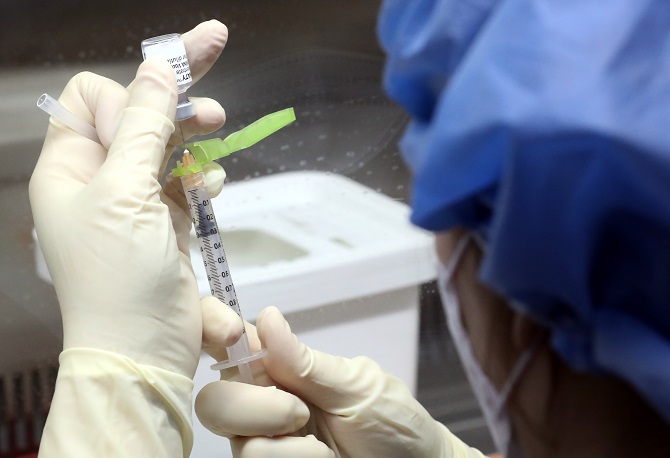
A medical worker prepares Pfizer’s COVID-19 vaccine at a hospital in central Seoul on Feb. 27, 2021. (Pool photo) (Yonhap)
SEOUL, March 1 (Korea Bizwire) — South Korea’s daily new coronavirus cases stayed below 400 for the second straight day Monday, but health authorities remained alert over a continued rise in cluster infections ahead of the start of the spring school semester.
The country reported 355 more COVID-19 cases, including 338 local infections, raising the total caseload to 90,029, the Korea Disease Control and Prevention Agency (KDCA) said.
The tally was lower than the 356 recorded Sunday and 415 on Saturday.
The fall in new cases largely appeared to be due to fewer tests over the weekend. The country added two more deaths, raising the total to 1,605.
According to health authorities and municipalities, 319 new COVID-19 cases were confirmed nationwide Monday as of 9 p.m., down nine from the same time a day earlier.
South Korea’s total COVID-19 cases topped 90,000, about 13 months after its first confirmed case on Jan. 20, 2020.
New virus cases somewhat slowed compared with the third wave of the pandemic peaking at a record high of 1,241 on Dec. 25.
But a continued rise in cluster infections at workplaces, hospitals and risk-prone facilities has posed challenges to the country’s antivirus efforts amid concerns about the spread of more contagious COVID-19 variants.
The country has decided to extend the current social distancing rules for another two weeks through March 14 with a new school semester starting this week.
The greater Seoul area, home to about half of the nation’s 52 million population, is under Level 2, the third highest in its five-tier system, and other regions are placed under Level 1.5. Private gatherings of five or more people are banned.
“Face-to-face contacts have increased amid relaxed virus curbs, and there is risk of cluster infections spreading with the start of the new semester in March,” KDCA chief Jeong Eun-kyeong said during a daily briefing.
Of the locally transmitted cases, 92 additional cases were reported in Seoul and 156 in Gyeonggi Province that surrounds the capital. Incheon, 40 kilometers west of Seoul, identified 14 new cases.
Cases tied to a private meeting in eastern Seoul came to 16, up 15 cases from the previous day.
Infections traced to a senior care hospital, northwest of Seoul, added 11 cases to increase the total to 12. A fitness center in Jeonju, 194 km southwest of Seoul, reached 49, up nine from a day earlier.
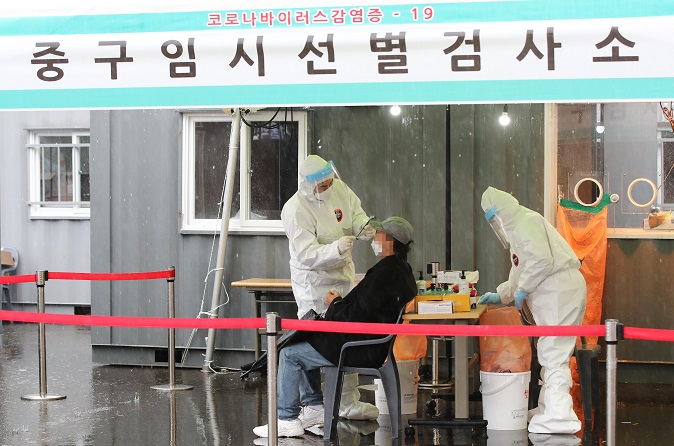
Health workers conduct a new coronavirus test on a citizen at a temporary testing site in front of Seoul Station in central Seoul on March 1, 2021. (Yonhap)
As of Monday, health authorities added 14 new cases of more transmissible virus variants, raising the total to 156.
South Korea began its COVID-19 vaccination campaign Friday by administering the vaccine developed by AstraZeneca to health workers and patients aged under 65 at nursing homes and hospitals.
It also started Saturday to give the first shot of the Pfizer vaccine to front-line medical workers.
The country administered 765 vaccine shots Sunday, raising the total to 21,177, according to the KDCA. It aims to achieve herd immunity by November.
Health authorities said a total of 152 mild symptoms after the vaccinations, such as fever and muscle pain, have been reported since Friday.
The KDCA chief said the agency has recommended medical staff members in vaccination centers to use special syringes to maximize the number of jabs per vaccine bottle to reduce waste, but the guideline is not mandatory.
The so-called low dead space (LDS) syringes are designed to minimize wasted vaccine doses by reducing space between the needle and the plunger.
It was previously estimated that a bottle of AstraZeneca’s vaccine was enough to provide jabs to 10 people, while that of Pfizer came to six.
When using the LDS syringes, however, the KDCA believes a bottle of AstraZeneca’s vaccine can provide jabs for up to 12 people, while that of Pfizer’s can increase up to seven.
The country, meanwhile, added 17 imported cases, increasing the total to 7,063. Three cases came from Pakistan, followed by two each from Indonesia, Japan, the United States and Morocco.
The country, meanwhile, added 17 imported cases, increasing the total to 7,063. Three cases came from Pakistan, followed by two each from Indonesia, Japan, the United States and Morocco.
The number of seriously or critically ill COVID-19 patients was 131, down from 135 in the previous day.
The positivity rate, the portion of newly infected people against the daily number of people receiving tests, came to 2.12 percent, up from 1.63 percent a day earlier.
The total number of people released from quarantine after making full recoveries stood at 81,070, up 373 from a day earlier.
(Yonhap)



